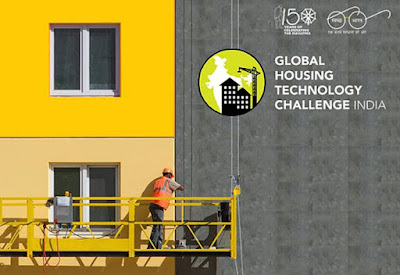Light House Projects - Under Global Housing Technology Challenge (GHTC) India
A model housing project consists of approximately 1,000 houses built with shortlisted alternate technologies suitable to the geo-climatic and hazard conditions of the region. In this project, ready-to-live houses will be demonstrated and delivered in a sustainable manner, with speed, economy, and quality of construction. The minimum size of houses constructed under LHP shall be in accordance with the prevailing guidelines of the Pradhan Mantri Awas Yojana (Urban).
This project is proposed in 6 states of India and with new and innovative technology has introduced a change in building infrastructure. Under LHP, constructed housing will include such on-site infrastructure as internal roads, pathways, common green spaces, boundary walls, water supply, sewage, drainage, rainwater harvesting, solar lighting, and external electrification.
Houses under LHP will be designed keeping in view the dimensional requirements laid down in National Building Code (NBC) 2016 with good aesthetics, proper ventilation, orientation, as required to suit the climatic conditions of the location, and adequate storage space, etc. Convergence with other existing centrally sponsored schemes and Missions such as Smart Cities, AMRUT, Swachh Bharat (U), National Urban Livelihood Mission (NULM), Ujjwalla, Ujala, and Make in India shall be ensured during the designing of LHPs at each site.
The structural details shall be designed to meet the durability and safety requirements of applicable loads including earthquakes and cyclones and floods as applicable in accordance with the applicable Indian/International standards. Cluster design may include an innovative system of water supply, drainage and rainwater harvesting, and renewable energy sources with a special focus on solar energy. The period of construction will be a maximum of 12 months from the date of handing over of sites to the successful bidder after all statutory approvals. Approvals will be accorded through a fast-track process by the concerned State/UT Government.
Technology Providers successfully completing the construction of LHPs within the stipulated 15-month period of the contract (including 3 months for preparing relevant drawings and taking all statutory approvals from various agencies in the State followed by 12 months period for actual construction) will be rewarded with USD 20,000 each.
A further incentive for early completion is being provided wherein technology providers who complete LHPs in less than 12 months will receive an incrementally higher bonus of USD 2,000 for each month less than the stipulated period of 12 months.
For the subsequent allotment of constructed houses under LHPs to the eligible beneficiaries in States/ UTs, procedures of existing guidelines of PMAY (U) will be followed.






Comments
Post a Comment
Thank You for visiting, if you have any questions please feel free to ask: